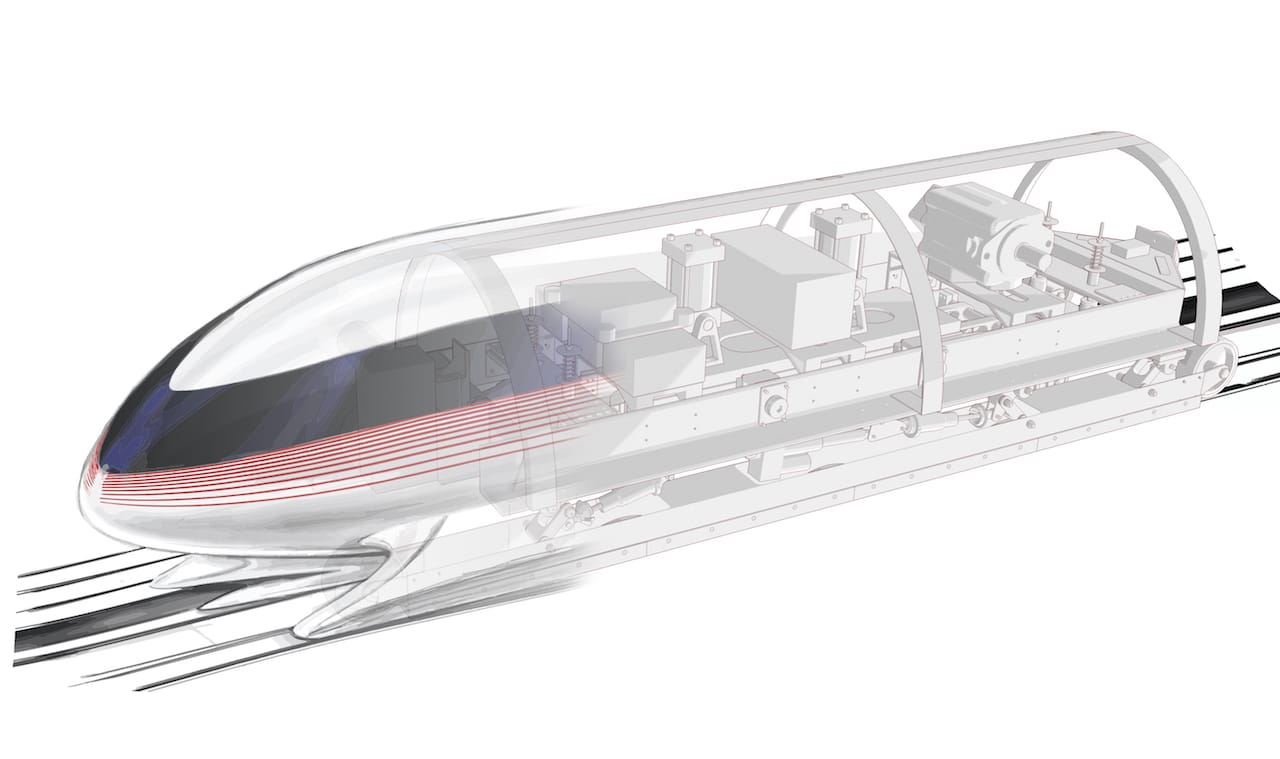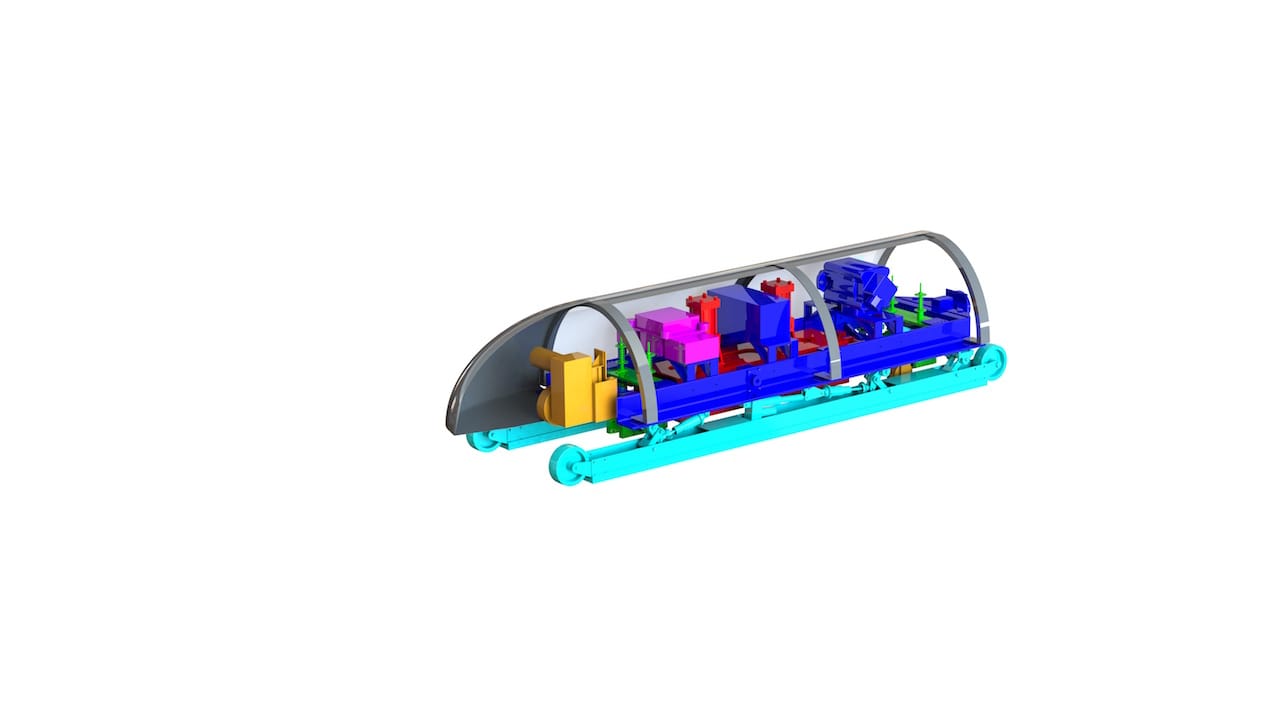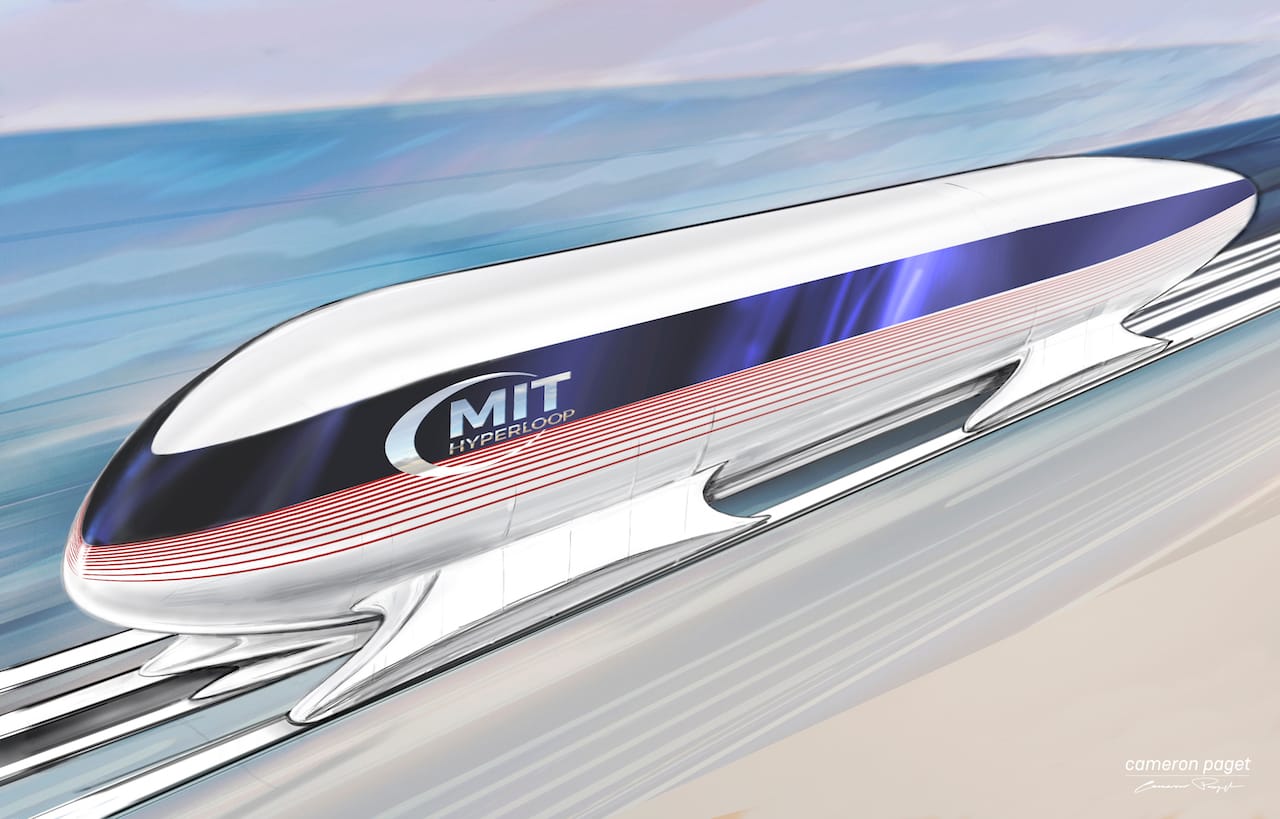MIT Students Win Design Competition to Help Bring the Hyperloop from Hype to Reality
In 2013, tech billionaire and "real life Iron Man" Elon Musk first proposed his concept for the Hyperloop, a futuristic ground transport system made up of levitating pods hurtling through pressurized tubes at 700mph.

In 2013, tech billionaire and “real life Iron Man” Elon Musk first proposed his concept for the Hyperloop, a futuristic ground transport system made up of levitating pods hurtling through pressurized tubes at 700mph. Since then, tech nerds the world over have been engaged in a mad race to create a viable design for this “fifth mode” of transit, as Musk calls it, and there’s been endless speculation about what it would look like.
Last week at Texas A&M, a team from MIT won first place in a SpaceX competition that challenged university students and independent engineering teams from around the world to design a prototype Hyperloop pod. With its snub-nosed torpedo shape, their winning design looks a bit like a wingless airplane, at least in renderings. They’ll have the opportunity to build and test it as a prototype in June on an in-progress track in California, along with 22 other top teams selected from a pool of 115 competitors.

The MIT team’s hypercomplex design consists of a 500-pound pod made of aluminum, carbon fiber, and polycarbonate. Two arrays of 20 neodymium magnets (the strongest type of magnet commercially available) allow it to levitate above the aluminum-plated track. It’s self-powered by photovoltaic panels on its roof. Popular Science explains what set it apart from other designs:
Unlike many of its competitors, MIT elected to use an external propulsion system that will function more or less like the catapults used by aircraft carriers to launch aircraft from the middle of the ocean. This feature will offload some of the energy and power required by the Hyperloop concept onto the propulsion system, which means the pod doesn’t have to carry an engine and can be lighter (and reach ultra-high speeds).

One tiny drawback: the design doesn’t currently include room for carrying any passengers or cargo. But they’re taking things one step at a time. The hope is that once they nail the superfast levitating pod part, the rest of the details will fall into place.
After the MIT team scrambles to build a working version of this pod by June, the next phase of the SpaceX competition will challenge entrants to design a pod with the highest possible speed on a one-mile track. “Of course you have to stop before the end,” Elon Musk told presenters during an appearance at the Texas A&M ceremony. “There will be a foam pit at the end, so you might recover some pieces of your pod.”
Read more on MIT’s designs here.





